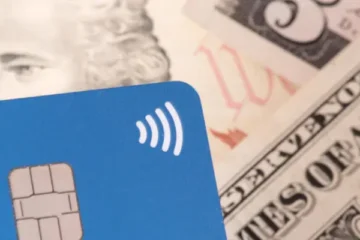Step-by-Step Guide to Paying Off High-Interest Debt
If you are tired of seeing your debt grow due to high interest rates, this article is for you.
Advertisement
In Japan, where the cost of living is high and credit usage is very common, it’s easy to fall into the endless trap of installment payments. But don’t worry! It is possible to pay off such debts. All it takes is implementing a few practical strategies and staying focused.
Advertisement
Here, we’ll share everything you need to know about dealing with high-interest debt. Let’s solve this together!
What Is High Interest and Why Does It Have a Big Impact on Debt?
Before starting to solve the problem, it’s essential to understand what you are facing. “High interest” refers to the cost you pay to borrow money.
Advertisement
In Japan, this is very common with credit cards, consumer finance, and even personal loans.
Why Is High Interest Dangerous?
Simply put, because debt increases very quickly. For example, if you have a debt of ¥100,000 with an annual interest rate of 18% (commonly seen with credit cards), it will grow to ¥118,000 in a year, excluding additional costs.
It’s like pouring water into a boat with a hole. No matter how much water you bail out, more keeps coming in.
How to Track Your Debts and Prioritize Payments

Before starting to pay off your debts, it’s crucial to clearly understand your financial situation. Often, the problem feels bigger than it actually is because the information is scattered, and you don’t know exactly how much you owe.
Therefore, the first step is to organize everything. Write down all your debts on paper (or use an app) and check the details carefully.
This step may seem time-consuming, but it’s essential. You cannot think of an efficient solution without understanding the size of the problem. Let’s organize it together!
Grab a pen and paper or a finance app (in Japan, useful tools like Zaim or Money Forward are available), and follow the steps below:
How to Organize?
- Prepare a pen and paper or a finance app (Zaim and Money Forward are excellent options in Japan).
- List all your debts and include the following details:
- Total amount borrowed.
- Interest rate.
- Monthly payment amount.
- Repayment deadline.
How to Prioritize?
Now that you understand your debts, you need to decide where to start. There are two methods to consider:
- Avalanche Method: Start by paying off the debt with the highest interest rate. This is the most cost-effective method.
- Snowball Method: Start by paying off the smallest debt. This gives you quick wins and boosts your motivation.
Choose the method that suits your style. The most important thing is to get started!
Negotiating with Creditors
Did you know that in many cases, you can negotiate better terms for your debt? In Japan, many companies are open to renegotiation.
How to Negotiate Debt:
- Contact your creditors: Reach out via phone or through the company’s website.
- Explain your situation: Be honest about your difficulty in making payments and express your willingness to resolve the issue.
- Request better terms: You can ask for the following:
- Lower interest rates.
- Extension of the repayment deadline.
- Installment payments for the total debt amount.
Other Options
If you have multiple scattered debts, consider debt consolidation. This means combining all your debts into a single loan with a lower interest rate.
This simplifies management, as you’ll only need to make one payment each month.
Strategies to Reduce Interest and Monthly Payments
High interest rates can feel like a bucket with a hole in it—no matter how much money you pour in, it keeps disappearing. If interest is the biggest obstacle in repaying your debt, focusing on reducing this cost is the best strategy.
Fortunately, in Japan, there are several practical options to lighten the burden and make debt repayment more manageable.
Here are some of the best ways to ease financial pressure and regain control of your budget:
1. Balance Transfers
Many credit card companies in Japan allow you to transfer the balance from one card to another, often with very low interest rates (sometimes even 0% for several months during promotional periods). This can give you a break to restructure your repayment plan and settle your debts faster.
2. Refinancing
Refinancing means replacing your current debt with a loan that has a lower interest rate. This is a common method for large loans, such as personal loans, car loans, or home loans.
3. Asset-Backed Loans
If you own valuable assets like a car or jewelry, you can use them as collateral to secure a low-interest loan. This helps reduce interest and lower your monthly payments.
Create a Realistic Repayment Plan
Getting out of debt is like running a marathon—it requires stamina and a solid plan. The key to repaying your debt is to create a realistic plan that fits your income and daily life.
Promising to pay ¥200,000 per month, for example, is counterproductive if your income cannot support it. This can lead to frustration and missed payments. Let’s create a grounded, truly effective plan together!
Steps to Create a Plan:
- Calculate your net income: Determine how much money remains after paying fixed expenses like rent and utilities.
- Set aside a fixed amount for debt repayment: Dedicate a portion of your monthly income solely to repaying your debt.
- Prioritize your payments: Use the Avalanche or Snowball method to organize your repayments.
- Monitor your progress monthly: Use apps or spreadsheets to track your repayment progress.
Additional Tip: If your budget is tight, consider cutting unnecessary expenses. Reviewing unused subscriptions or curbing impulse purchases is a great start.
Ways to Supplement Your Income for Faster Debt Repayment
Sometimes, cutting expenses alone isn’t enough to solve the problem. In such cases, increasing your income becomes essential. Fortunately, in Japan, there are numerous ways to earn extra income through flexible jobs or by leveraging existing resources.
The key is that even a small amount of additional income, when directed toward debt repayment, can help you get out of debt faster.
Tips for Increasing Income:
- Part-time Jobs: Common options include working at restaurants, convenience stores, or in delivery services.
- Selling Secondhand Items: Use platforms like Mercari or Rakuten to sell items you no longer need.
- Online Freelancing: If you have skills like translation, design, or programming, you can work remotely.
Even small additional earnings can make a significant difference when directly applied to debt repayment.
Avoiding the Debt Cycle Again
The relief of paying off your debt is immense, but it’s important to ensure you don’t fall back into debt afterward. Here are some tips to help you avoid the same issue in the future:
Tips to Avoid New Debt:
- Create an Emergency Savings Fund: Start small, such as setting a goal of ¥50,000, and gradually increase it over time.
- Use Credit Wisely: Only use your credit card if you’re confident you can pay off the entire balance the following month.
- Plan Purchases: Make a shopping list in advance and avoid impulse buying.
Tools and Resources Available in Japan
Japan offers numerous tools and services that can be great allies in organizing and repaying debt. By leveraging technology and local support, you can make this process simpler and more efficient. Below are some key options:
Finance Management Apps:
- Zaim: An excellent app for managing income and expenses.
- Money Forward: Connects to your bank accounts and credit cards to automatically track transactions.
Financial Consultation Services:
- Houterasu (Japan Legal Support Center): Provides legal and financial assistance for people with debt issues, including renegotiating debts and offering free or low-cost advice.
- Local NGOs: Many organizations offer free support for financial planning and advice on negotiating with creditors.
By utilizing these resources, you can make your journey to debt repayment much smoother.





